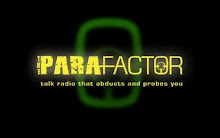
Phantom smells seem to accompany the paranormal on almost every level. From the smell of rotten eggs that sometimes marks spirit activity to the overwhelming odors of the skunk ape, aptly named for the very smell that precedes it, the paranormal is an odiferous area of study. Are these odors, like the banal and unsuspicious smells we encounter everyday, simply an attribute of the phenomena, or might they allude to a mechanism by which the phenomena presents itself?
Phantosmia is usually an indicator of a serious illness and phantom smells can be the harbingers of horrible medical concerns including epilepsy and brain tumors. Phantosmia, which has been linked to temporal lobe seizures, often accompanies epilepsy stemming from the hippocampus.

Temporal lobe epilepsy in particular has been somewhat of a catchall explanation for ghosts among debunkers and the scientific field in general. Temporal lobe seizures have often been associated with “seeing” ghosts and have even been singled out in possession cases. The aspect of “alien control” associated with temporal lobe conditions replaces the demonic when there is reason to suspect hyperactivity in the temporoparietal cortex, again, making the temporal lobe a convenient neurological patsy when it comes to explaining away the paranormal. It is a patsy so convenient, in fact, that it incurs suspicion through the frequency of its diagnosis.
The temporal lobe itself is not limited to producing just olfactory hallucinations and here is where the skeptic gets a little more fuel for their fire. The ventral part of the temporal cortices are responsible for such high perception recognition as faces and scenes. Put together the instances of phantosmia, alien control (which has a wide range of seemingly paranormal attributes from feeling as though there is a presence in the room to actually losing physical control of your body), and visual hallucinations stemming from the fusiform gyrus and parahippocampal gyrus part of the temporal cortex and you have all the makings of a serious haunting. Or is it that easy?

If it was, we would seemingly see a lack of both EVPs and thermal imagery, you would think. Could mass hallucinations be the culprit again then? Are our ghost hunters all victims of a form of temporal lobe epilepsy specific in it’s conditions? Let’s pose an alternative. Trauma to the brain can often cause temporal lobe lesions. Many people who have temporal lobe lesions may have some of the effects of temporal lobe epilepsy varying in severity. What if exposure to a rip in dimensional barriers could tax both the fusiform gyrus and parahippocampal gyrus areas to such an extent that temporary damage is done to that area of the temporal lobe? Let’s go a step further and ask if these areas of the brain HAVE to be manipulated in order for the multiverse to be seen. If so, can a brush with the paranormal lead to multiple exposures simply due to the damage done to the temporal lobe during that first incident? What if overstimulation caused by paranormal activity results in a small lesion in the temporal lobe? If damage or stress to the temporal lobe opens one up to paranormal experiences can the forming of lesions snowball and intensify these experiences?
(Continued in Part 2)
Ash

Fascinating thought My sister and experience a lot of paranomal stuf where we live but particularly in Death Valley which is right next door to us. Down there my sister sees visions in her head and smells things very clearly. I my self have experienced nausia, depersonalization and dizzyness while in death valley.
ReplyDeleteI have always felt that blogging has been an art where people express their experiences in the best manner.This is something that is very informational.I must appreciate your article writing skills.
ReplyDelete